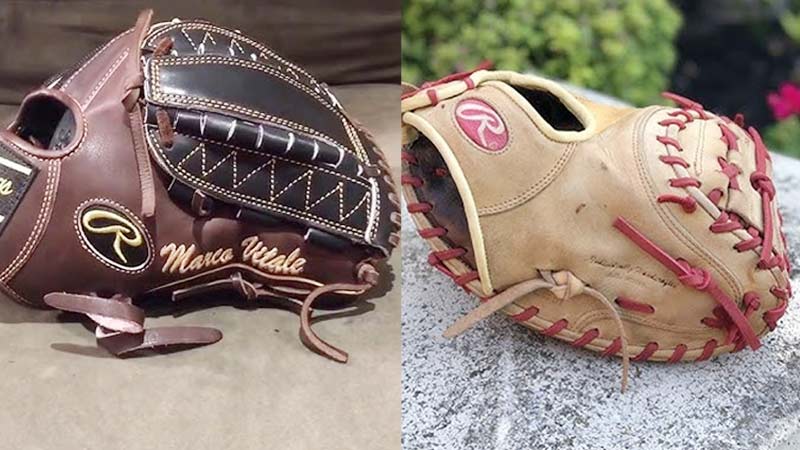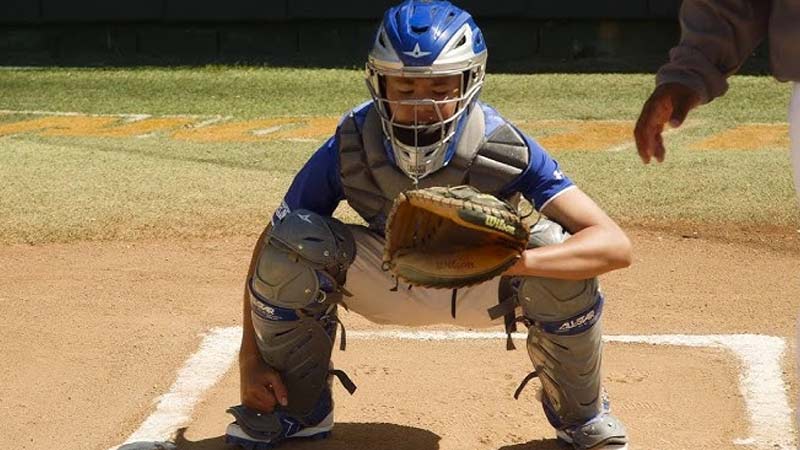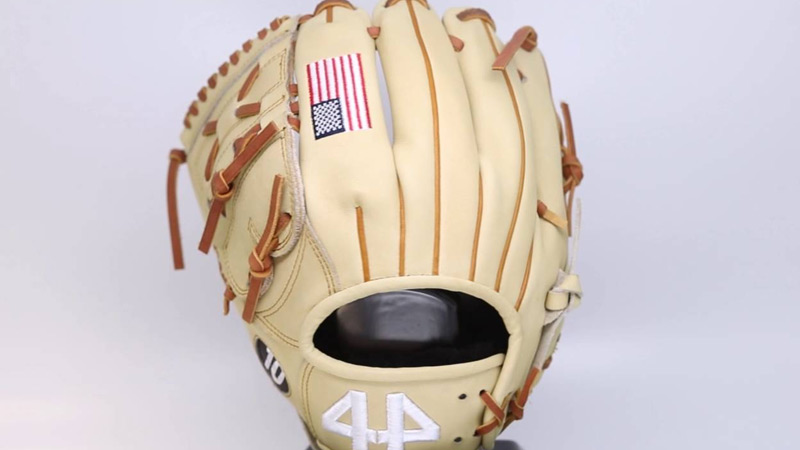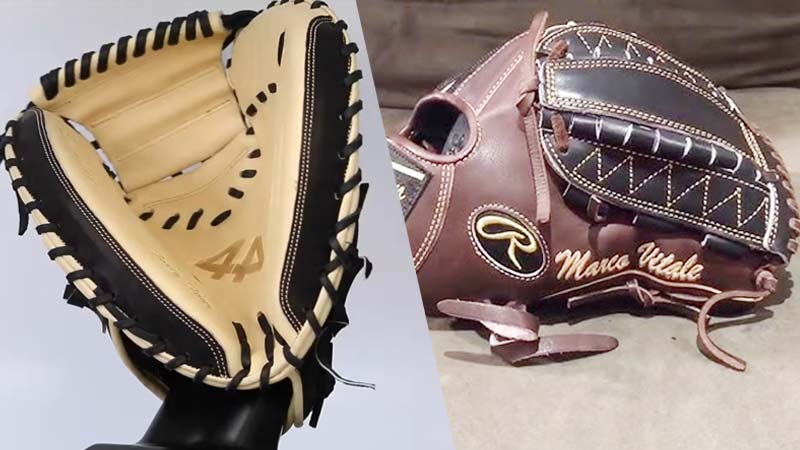The terms “baseball mitt” and “glove” are often used interchangeably, yet they subtly diverge in design and application on the baseball field.
A baseball mitt, commonly associated with catchers, features a rounded, open design with deep padding to handle high-speed pitches.
In contrast, a baseball glove, favored by infielders and outfielders, typically boasts a more defined shape, shallower pocket, and varied webbing styles for quick ball retrieval.
This distinction extends to position-specific needs, with mitts tailored for catchers and gloves offering versatility across different playing positions.
Understanding these nuances enhances a player’s ability to choose the most fitting equipment for their role on the diamond.
What Is the Difference Between a Baseball Mitt and a Glove?
In the realm of baseball, the terms “mitt” and “glove” are often used interchangeably, but there are subtle differences between the two.
Both are crucial pieces of equipment for players, especially those who handle the ball frequently, such as catchers and infielders.
Here are the key differences between baseball mitts vs gloves:
Design
- Baseball Mitt: Traditionally, a baseball mitt is characterized by its open design with a deep pocket and a more rounded shape. It is often associated with the position of a catcher and is designed to provide ample space for catching and controlling pitched balls.
- Baseball Glove: On the other hand, a baseball glove typically has a shallower pocket and a more defined shape. It is commonly used by infielders and outfielders who need to quickly retrieve and transfer the ball.
Position-specific Use
- Baseball Mitt: Catcher’s mitts are a subtype of baseball mitts and are heavily padded to withstand the high-speed pitches thrown by pitchers. They have a distinctive claw-like shape to help catch and control the ball securely.
- Baseball Glove: Infielder gloves are designed for quick ball transfers and typically have a shallower pocket, while outfielder gloves have a deeper pocket for catching fly balls.
Webbing Styles
- Baseball Mitt: Catcher’s mitts often feature closed webbing, which helps conceal the pitcher’s grip on the ball and prevents the opposing team from seeing the signs. The closed webbing also provides additional support for catching fastballs.
- Baseball Glove: Infielder gloves commonly have open webbing to allow for a quicker ball transfer, while outfielder gloves may have a closed or basket webbing to secure fly balls more effectively.
Versatility
- Baseball Mitt: Catcher’s mitts are highly specialized and are primarily used by catchers. Their design caters specifically to the needs of this position.
- Baseball Glove: Gloves, with their various styles and sizes, are more versatile and can be used by players in multiple positions, from infielders to outfielders.
Mitt vs Glove Baseball

In the world of baseball, the terms “mitt” and “glove” are frequently used, often interchangeably, but they refer to distinct pieces of equipment with specific design nuances.
Understanding the differences between a baseball mitt and a glove is crucial for players to select the most suitable gear for their position on the field.
Let’s delve into a comparative overview, highlighting key features that set mitts and gloves apart:
| Aspect | Baseball Mitt | Baseball Glove |
| Design | Rounded, open design with a deep pocket | More defined shape, shallower pocket |
| Position | Primarily for catchers | Used by infielders, outfielders, and catchers |
| Webbing Style | Closed webbing for concealment (catchers) | Open or closed webbing, position-dependent |
| Pocket Depth | Deeper pocket for secure ball control | Shallower pocket for quick ball retrieval |
| Versatility | Specialized for catching | Versatile, used across various positions |
Is It a Baseball Glove or a Mitt?
The terms “baseball glove” and “baseball mitt” are often used interchangeably, and both are acceptable ways to refer to the handwear used by baseball players. However, there are subtle differences in how these terms are commonly applied.
Baseball Glove
The term “baseball glove” is a broad descriptor encompassing handwear worn by players across various fielding positions, such as infielders and outfielders.
Gloves are designed to aid players in catching, fielding, and throwing the ball. They come in a range of sizes, shapes, and styles, including open or closed webbing, depending on the player’s position and preferences.
Infielder gloves typically have a shallower pocket for quick ball transfer, while outfielder gloves may have a deeper pocket to secure fly balls.
Baseball Mitt
While “mitt” is often used interchangeably with “glove,” it more specifically refers to the catcher’s mitt.
Catcher’s mitts have a unique design, featuring additional padding to withstand the force of high-speed pitches. They are crucial for catchers who need a secure and protective tool to receive pitches from the pitcher.
The term “mitt” is also sometimes used more broadly, especially when referring to any handwear used in baseball, but its primary association is with the catcher’s position.
How to Choose the Right Baseball Mitt for You?

Choosing the right baseball mitt is a crucial decision that can significantly impact your performance on the field.
Here are essential factors to consider when selecting the perfect mitt for you:
Position-Specific Design
Identify your primary playing position. Catchers, infielders, and outfielders have unique needs.
Catchers typically use mitts with extra padding, while infielders and outfielders may opt for gloves with specific features like pocket depth and webbing style.
Size and Fit
Mitts come in various sizes, so it’s crucial to find one that fits your hand comfortably. A properly sized mitt ensures better control and minimizes the risk of injury.
Material
Consider the material of the mitt. Leather mitts are popular for their durability and flexibility. Synthetic options may be more affordable and require less break-in time but might not be as long-lasting.
Webbing Style
The webbing style affects ball visibility and control. Closed webbing provides more support for catching high-speed pitches, while open webbing allows for quicker ball transfer. Choose a webbing style that aligns with your position and preferences.
Pocket Depth
Infielders often prefer shallower pockets for quick ball retrieval and transfer, while outfielders may opt for deeper pockets to secure fly balls. Catchers need mitts with a deep pocket to handle fast pitches.
Break-In Time
Consider the break-in time required for the mitt. Leather mitts may take longer to break in but often offer a more customized fit over time. Synthetic mitts may have a shorter break-in period.
Budget
Determine your budget. While high-end mitts may offer premium features, there are quality options available at various price points. Invest in the best mitt you can afford within your budget.
Brand and Model
Research reputable brands and specific models are known for their quality and performance. Reviews from other players can provide valuable insights into the durability and functionality of different mitts.
Try Before You Buy
Whenever possible, try on different mitts to assess comfort and fit. Pay attention to how the mitt feels when catching and throwing, as these factors are critical during gameplay.
League Regulations
Be aware of any specific regulations or requirements set by your baseball league regarding the type and size of mitts allowed. Ensure your chosen mitt complies with these guidelines.
How to Choose the Right Baseball Gloves for You?

Choosing the right baseball glove is a critical decision that can greatly impact your performance on the field.
Here are key factors to consider when selecting the perfect glove for you:
Position-Specific Design
Identify your primary playing position. Infielders, outfielders, and pitchers have unique needs. Infielders typically use gloves with shallower pockets for quick ball transfers, while outfielders may prefer deeper pockets for securing fly balls.
Size and Fit
Find a glove that fits your hand comfortably. The right size ensures better control and minimizes the risk of injury. Consider trying on different sizes to determine the one that feels most natural for you.
Material
Decide on the material of the glove. Leather gloves are known for their durability, flexibility, and premium feel.
Synthetic gloves may be more affordable and require less break-in time but might not offer the same long-term durability.
Webbing Style
Choose a webbing style that aligns with your playing position and preferences. Closed webbing provides more support for catching high-speed pitches, while open webbing allows for quicker ball visibility and transfer.
Back Style
The back style of the glove can impact flexibility and comfort. Open backs provide more flexibility for infielders, while closed backs offer more support and stability, ideal for pitchers.
Glove Pattern
Consider the glove pattern, which refers to the shape of the glove’s fingers and thumb. There are various patterns, and finding one that complements your hand shape and provides a secure grip is essential.
Break-In Time
Be aware of the break-in time required for the glove. Leather gloves often take longer to break in but can offer a more customized fit over time. Synthetic gloves may have a shorter break-in period.
Budget
Determine your budget before shopping for a glove. High-quality gloves with premium features may be more expensive, but there are reliable options available at various price points.
Brand Reputation
Research reputable brands are known for producing high-quality baseball gloves. Reading reviews from other players can provide insights into the durability and performance of specific glove models.
Try Before You Buy
Whenever possible, try on different gloves to assess comfort and fit. Pay attention to how the glove feels when catching and throwing, as these aspects are crucial during gameplay.
League Regulations
Be aware of any specific regulations or requirements set by your baseball league regarding the type and size of gloves allowed. Ensure your chosen glove complies with these guidelines.
FAQS
Are there specific situations where it’s better to use a mitt or a glove in baseball?
Yes, catchers generally use mitts for better ball control, while infielders and outfielders prefer gloves for quicker ball transfers.
What factors distinguish a baseball glove from a mitt?
Gloves have varied designs for different positions, while mitts, especially catcher’s mitts, prioritize extra padding and a distinct shape.
What’s the primary difference between a mitt and a glove in baseball?
While both terms refer to handwear, a mitt is typically associated with catchers and features a deeper, rounded design.
Can the terms “baseball mitt” and “baseball glove” be used interchangeably?
Yes, people often use both terms to refer to handwear used in baseball, but “mitt” is more closely associated with catchers.
Do professional players have personalized mitts or gloves?
Yes, many professional baseball players customize their mitts or gloves to suit their preferences. Customizations may include alterations to the webbing, pocket depth, and overall design.
Wrap Up
The subtle disparities between a baseball mitt and a glove significantly impact a player’s performance on the field.
The specialized design of a mitt, tailored for catchers, prioritizes secure ball control and protection against high-speed pitches.
Meanwhile, the more versatile glove, with its distinct shapes and pocket depths, accommodates the varied needs of infielders and outfielders.
The choice between mitt and glove is not merely semantic; it is a strategic decision that aligns with specific positional requirements.
Ultimately, understanding the nuanced differences empowers players to optimize their performance, ensuring that they wield the most suitable equipment for their role in the dynamic game of baseball.







